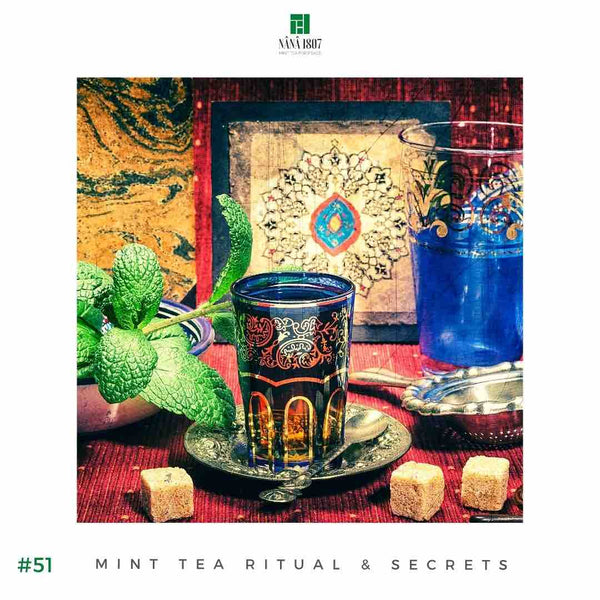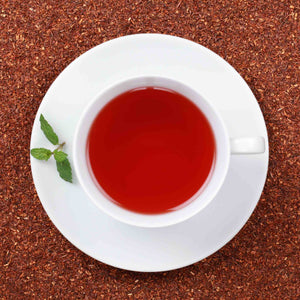Henna & Mint Tea
Oct 25, 2020
Ritual & Secrets of Mint Tea
Henna Ceremony with Mint Tea
Body ornamentation with Henna is an integral part of Moroccan culture. A tradition often associated with wedding rituals and other important celebrations, around a good mint tea.
A Mediterranean Plant
Henna is the leaves of Lawsonia inermis . This small shrub from 1.5 m to 2.5 m, it is cultivated in hot and arid areas from Morocco to India via Egypt, Yemen or Pakistan. One of its peculiarities: the more the plant has to fight against extreme climatic conditions (heat and drought), the more it develops a dye called lawsone, which can reach a content of 2.5% in the leaves under ideal conditions.
Reduced to a fine powder, the henna leaves are mixed with water, to form a paste that can be used for body tattooing or hair coloring. Natural henna has a very pronounced dark green color, the less dull this color and the fresher and therefore more effective your henna will be.
Henna has been used since antiquity for body ornamentation, on hair and nails, as well as fabrics such as silk, wool and leather. Historically, henna was used in the Arabian Peninsula, the Indian subcontinent, the Near and Middle East, Carthage, other parts of North Africa and the Horn of Africa.
The Art of Henna
Henna-Artists use a brush, stick or fine nozzle to apply the paste to the skin, creating patterns and beautiful adornments on various parts of the body.
In order to fix tattoo and enhance the color in a natural way, they pour a mixture of lemon juice and sugar on the design at the end of the application.
After a few hours, the paste hardens and then it cracks and pulls away from the skin, leaving behind the coloured pattern on the skin.
Temporary, the henna tattoo lasts a few days or a few weeks, depending on the intensity of the application.
Often applied in Morocco on the hands and feet, Henna also colors the hair and nails. Men also use it to dye their beards.
Historical use of Henna
Also known as Mendhi , the use of henna to adorn the body originated in North Africa, then spread to the Arab world, India and Asia through itinerant traders. Accounts of the use of henna date back to the Bronze Age and henna is featured in mythological tales.
The Henna motifs from Morocco date back to the time of the first nomadic Berber communities. Henna was used, on every happy occasion - births, weddings and religious celebrations, as well as the Moroccan Tea ceremony.
Patterns of Henna and Symbolism
While the world appreciates the art of henna for its visual beauty, many Moroccans attach great importance to the work of art. Stemming from Berber beliefs, many Moroccans still consider a henna tattoo to be a symbol of good luck.
Some people also strongly believe that henna can help guard against bad luck and the evil eye, especially when the designs incorporate khamsa , an eye, or diamond shapes.
p>Other common henna designs include twists and swirls, geometric shapes, floral designs, and linear designs.
Other beliefs related to the use of henna are that it can encourage a bountiful harvest, ensure sufficient rains, help prevent infertility and facilitate childbirth, prevent disease and woes, help families to earn a living and promote harmonious relationships
Typical Henna designs can vary widely in Morocco, with intricate and delicate floral designs common in northern regions and larger, bolder designs more popular in southern regions.
The Henna ceremony for the Bride
During the traditional Moroccan wedding which lasts between three and seven days according to tribal customs, the henna ceremony takes place the day before the religious engagement of the wedding. The bride and her close friends get together to celebrate her life as a young girl, around a Mint tea and Moroccan pastries.
Older married women impart words of wisdom to the bride and prepare her for the wedding night. Henna is applied to the hands and feet of the bride, marking her career as a woman. Some brides discreetly include the groom's name in the tattoo design.
The Benefits of Henna for your health
Although henna is mainly used as a colouring plant, it is also known for its medicinal properties. The leaves are used in traditional medicine in India, in many Arab-Muslim countries. The herb is used in Ayurvedic medicine and Unani as a gargle for sore throat and extracts or decoction have been used as herbal remedies for diarrhea, amoebic dysentery, ulcers, tapeworms and fever.
Here are some awesome health benefits of this beautifying herb:
- Antioxidant and anti-aging properties
- Improved nail quality
- Fever reduction
- Reduction of sleep disorders
- Strengthens the hairline
- Detoxifying
- Headache relief
- Anti-inflammatory capacity
- Blood pressure regulation
- Relief of rheumatic and arthritis pain
- Treatment of dysentery
Combined with the benefits of Mint Tea, here is a natural ritual for your beauty and well-being.

.Taste the Difference & Share the Experience!





